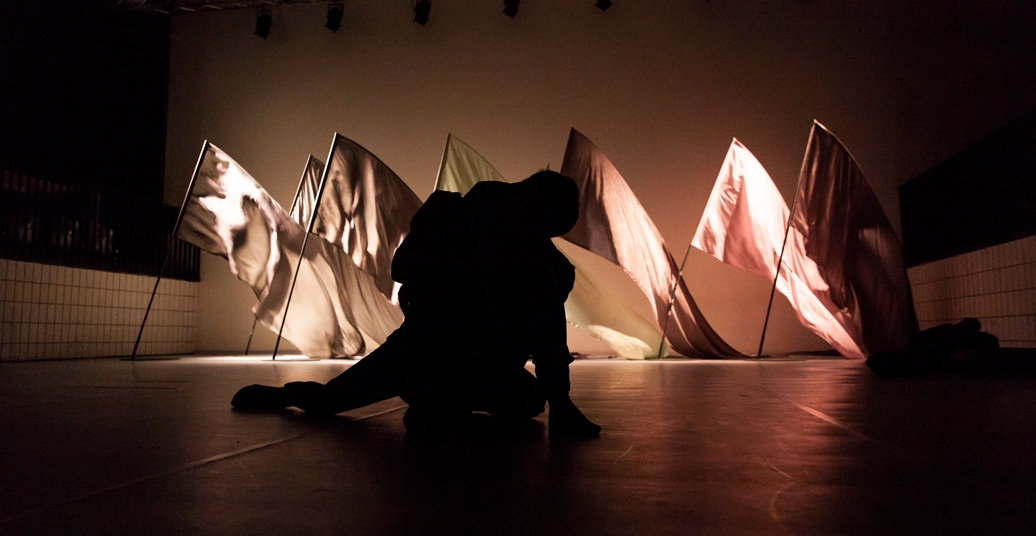“HYPERBODIES”, by bücking&kröger, places its focus on movement, with enigmatic results.
Right from the very outset, “HYPERBODIES” unleashes a stream of questions. What is Florian Bücking wearing, as he walks regally towards us? Is it a skirt made from long, foam pillows tied together? Or a spider costume? Or is he, in fact, holding it as a protective shield? And why is Raisa Kröger sitting with her back against the wall and staring at us so intently? What are the codes of this unfamiliar world?
The skirt (let’s call it that for the sake of clarity) is discarded, and Bücking and Kröger sit together and then begin to move across the floor. They clasp each other, striving together towards something, then maybe attempt to escape each other. As they shift through various different states of movement, occasionally pausing in carefully arranged poses, there are occasional, identifiable glimpses of emotion; pride, tenderness, sorrow. They then seem to re-enact a joint-mobilisation session between physiotherapist and patient. The images are elusive, melting away as soon as they become recognisable, provoking yet more questions. Is this ambiguity the crux of the work?
Bücking and Kröger do not appear to share my uncertainty – their movements are deliberate and assured, and I see no visible struggle to convey meaning. It is like I am listening to people speaking a language which I do not understand – to them it is meaningful, it has its own precise syntax and etymology, and each word is laden with nuance. Yet the meaning is lost on me, and everything starts to blur into an abstract melody.
At one point, the two performers are caught in a spotlight and begin to tremble rhythmically. Their intention bolts across the room, as clear as lightning, hooking me in, and dragging me towards them. There is a boldness in their bodies which demands to be heard. It is a moment of unity which allows me a window in to their meaning-making. Then they go their separate ways, each individually exploring disjointed, locking movements, and I find myself once more peering through the fog, trying to grasp at what they are offering me.
Bücking hurls himself around the stage, playing with representations of melodrama, strutting down an imaginary catwalk. A row of oversized flags stand at the back of the stage, and, as a wind machine begins to make them ripple, he grabs a flagpole as though to stop himself from being blown away. It makes me laugh, and the spontaneous reaction comes as a relief. For the most part, however, I come away from the work unsure of my role. Am I a disregarded spectator, or a trusted confidant? Is all this happening because of the audience, or despite us?
I often leave performances with the impression that many questions have been asked of me. But in this instance, I feel as though perhaps bücking&kröger have given me answers I was unable to understand. The programme notes tell me that “HYPERBODIES” is a study of pathos, and emotive body images. I admit that I am not immediately struck with a sense of the ‘hyper-ness’ of the bodies, or of their ‘oversized, swollen shapes’ – instead, it feels as though I am watching them in outline from behind a frosted window. Perhaps, through the studied analysis of its physical manifestation, pathos loses its instinctive, communicative nature, and becomes something altogether unrecognisable? I ask myself what new identities it takes on if it is no longer a method of communication?




